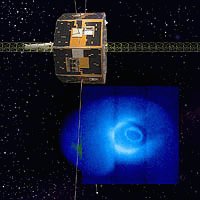Action Items and Issues
The second IMAGE Data System Workshop was held at GSFC on March 19-20.
The third Workshop is tentatively scheduled for June 4-5. A later date
was considered in June, but that turned out to have too many conflicts
for the participants. Just as with previous meetings, this will last a
day and a half. I anticipate that Rick Burley and others in the NSSDC
would be available for informal interactions on the day prior to the
meeting. It is important to notify Rick in advance if you intent to
attend the meeting.
-
The primary purpose of the meeting was to decide on the use of a
Level-0.5 telemetry format for the IMAGE mission. After much
discussion, the decision was to have a Level-0.5 telemetry format and to
use IDFS. Naturally, there are a variety of problems that have to be
solved before everyone is capable of producing and reading IDFS
formatted telemetry.
-
To aid in that process, Chris Gurgiolo will create a directory
in the frio account on the pluto computer at SwRI, which will contain
the "generic" IDFS subroutines. The other files to be included in the
directory are an example of an IDFS formatted file, a sample program
that uses the subroutines to read that file and write an ASCII dump of
its contents, and a file containing that ASCII dump of the sample IDFS
file contents. It should be possible for any interested team members to
access this directory for the purpose of making use of this library of
basic IDFS C-language subroutines.
-
It was reported at the Workshop that SwRI is attempting to take
the basic IDFS C-language subroutines and interface them to IDL. This
will allow IDL procedures to read/write IDFS files, after having
installed the C-code modules.
-
Sten Odenwald suggested that his task to support IMAGE may allow
him to also help in making IDFS formatted files more accessible from
IDL. The only alternative to the task underway at SwRI is to translate
the existing C-language IDFS subroutines into native IDL code, so that
IDFS-smart C modules do not have to be installed on each person's local
machine with their IDL installation. The result would be something like
Rick Burley's read_my_cdf and write_my_cdf IDL procedures, although
there would be more IDL coding involved in the IDFS suite.
-
At this meeting we found that most of the Level-1 CDF files,
that have been previously created for the IMAGE instruments, are lacking
some of the information necessary for CDAWweb support. Those who have
created these files are referred to the web pages at
http://spdf.gsfc.nasa.gov/istp_guide/
which now includes the
specification of all required variables and attributes for the CDF
files. We have the action to repair the deficiencies in the CDF files
prior to the next Workshop in June.
-
Another action to come from the meeting is for all instrument
leads and T&M team members to provide a list and description of the
display and analysis applications that they will commit to providing
prior to launch and preferably I&T. The objective is to collectively
review the assembled list in order to determine whether we will have an
acceptable compliment of applications available for handling Level-0.5
and Level-1 data at the start of the MO&DA phase of the mission. It is
obvious that the applications to view and analyze IMAGE data will
greatly mature in capability and variety during the first year of the
mission. What cannot be taken for granted is that IMAGE data can be
usefully accessed from the beginning of the mission. The expectation is
that computer code for display of instrument measurements in their full
time and feature resolutions can be made available. It may also be
possible to provide some limited analysis tool, with the caveat that
they cannot be fully certified until after launch. As personal display
and analysis research codes mature and are validated through peer
review, it may become possible to add additional "public" tools to the
IMAGE web pages.
-
Joe Perez presented an analysis of the use of linear
basis-function image inversion. He demonstrated that the basic ring
current distribution can be derived from a range of observing
perspectives using this technique. Also shown was the consequence of
tailoring the basis-functions. The approach represents an additional
"hands-off" technique for analyzing ENA images. At the moment the
technique is fairly time consuming on a small desktop personal computer,
however it was felt that the addition of internal memory and the usual
advancement in processor speeds would make this technique much more
practical.
-
Rick Burley presented his current take on the orbit-attitude
files to be produced in the SMOC. IMAGE team members were encouraged to
let Rick know what related parameters are important to interpreting and
analyzing the instrument measurements. I don't have the list of
parameters he is currently planning to include, but I'll try to
distribute that at a later time.
Everyone on the IMAGE team should take note of the developments
occurring with the handling of IMAGE instrument measurements. It seems
no other mission has previously advanced to this level of data system
preparation at this stage in the mission lifetime. It is similarly
clear that many previous missions have had the best intentions of
fulfilling ambitions for broad access to their data products. With
continued attention, there remains every reason for IMAGE to succeed
where other missions have fallen short.
Dr. Dennis L. Gallagher, dennis.gallagher@msfc.nasa.gov, +1-205-544-7587
Mail Code ES83, NASA Marshall Space Flight Center, Huntsville, AL 35812
Curators
Dr. E. V. Bell, II, ed.bell@nasa.gov, +1-301-286-1187
NSSDC, Mail Code 690.1, NASA Goddard Space Flight Center, Greenbelt, MD 20771
Dr. D. R. Williams, dave.williams@gsfc.nasa.gov, +1-301-286-1258
NSSDC, Mail Code 690.1, NASA Goddard Space Flight Center, Greenbelt, MD 20771
|

